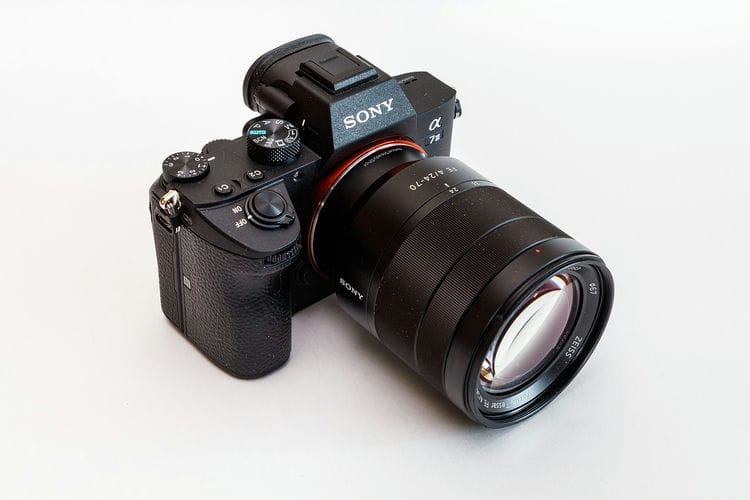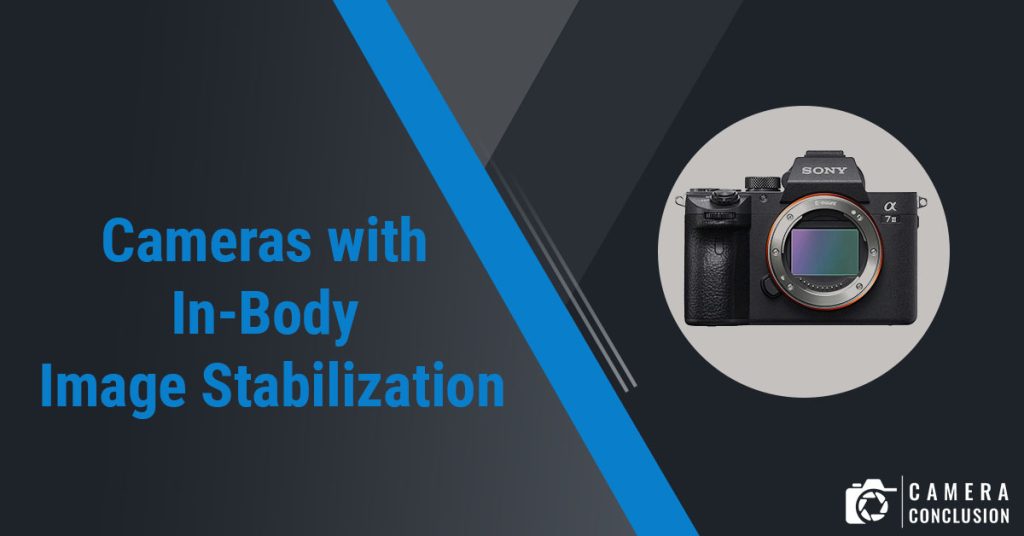Index
- Cameras with In-Body Image Stabilization from Major Brands
- 1. Canon Cameras with In-Body Image Stabilization
- 2. Nikon Cameras with In-Body Image Stabilization
- 3. Sony Cameras with In-Body Image Stabilization
- 4. Fujifilm Cameras with In-Body Image Stabilization
- 5. Panasonic Cameras with In-Body Image Stabilization
- 6. Olympus Cameras with In-Body Image Stabilization
- 7. Pentax Cameras with In-Body Image Stabilization
- Advantages and Disadvantages of IBIS
- Conclusion
In-Body Image Stabilization (IBIS) has become an increasingly popular feature in modern cameras, offering photographers the ability to capture sharp, clear images in a variety of shooting situations. IBIS technology uses internal sensor mechanisms to compensate for camera movement and reduce the effects of camera shake, resulting in sharper images and smoother videos. With so many camera models on the market, it can be challenging to know which ones have IBIS. In this article, we will explore which major camera brands offer IBIS technology in their camera models, as well as the advantages and disadvantages of this feature. Whether you’re a professional photographer or an amateur enthusiast, understanding the benefits and limitations of IBIS can help you choose the best camera for your needs.
Cameras with In-Body Image Stabilization from Major Brands
1. Canon Cameras with In-Body Image Stabilization
- Canon EOS R7
- Canon EOS R6 II
- Canon EOS R6
- Canon EOS R5
- Canon EOS R3
- Canon EOS RP
- Canon PowerShot G1 X III
- Canon PowerShot G3 X
- Canon PowerShot G5 X MII
- Canon PowerShot G5 X
- Canon PowerShot G7 X MIII
- Canon PowerShot G7 X MII
- Canon PowerShot G9 X II
- Canon PowerShot G9 X
- Canon XC10
- Canon PowerShot SX70 HS
- Canon PowerShot SX740 HS
- Canon PowerShot SX730 HS
- Canon PowerShot SX710 HS
- Canon PowerShot SX720 HS
- Canon PowerShot SX540 HS
2. Nikon Cameras with In-Body Image Stabilization
- Nikon Z7 II
- Nikon Z6 II
- Nikon Z5
- Nikon Z9
- Nikon Z7
- Nikon Z6
- Nikon P950
- Nikon P1000
- Nikon A1000
- Nikon B700
- Nikon P900
- Nikon P610
- Nikon W300
- Nikon A900
- Nikon S9900
- Nikon AW130
- Nikon B500
- Nikon S7000
- Nikon L840
- Nikon S6900
3. Sony Cameras with In-Body Image Stabilization
- Sony A7R V
- Sony A1
- Sony A7R IV
- Sony A7R III
- Sony A7 IV
- Sony A9 II
- Sony A7S III
- Sony A9
- Sony A7 III
- Sony A99 II
- Sony A7c
- Sony A7R II
- Sony FX30
- Sony FX3
- Sony ZV-E1
- Sony A7S II
- Sony A6500
- Sony RX10 IV
- Sony RX100 VII
4. Fujifilm Cameras with In-Body Image Stabilization
- Fujifilm GFX 100
- Fujifilm GFX 100S
- Fujifilm X-H2
- Fujifilm GFX 50S II
- Fujifilm X-T5
- Fujifilm X-H2S
- Fujifilm X-T4
- Fujifilm X-S10
- Fujifilm X-H1
- Fujifilm XP130
- Fujifilm XQ2
- Fujifilm XP80
- Fujifilm S9900w
- Fujifilm S9800
5. Panasonic Cameras with In-Body Image Stabilization
- Panasonic Lumix S1H
- Panasonic Lumix S5
- Panasonic Lumix GH5
- Panasonic Lumix S1R
- Panasonic Lumix S1
- Panasonic Lumix S5 II
- Panasonic Lumix S5 II X
- Panasonic Lumix GH6
- Panasonic Lumix GH5 II
- Panasonic Lumix G9
- Panasonic Lumix G95
- Panasonic Lumix FZ2500
- Panasonic Lumix G85
- Panasonic Lumix GX8
- Panasonic Lumix GX9
- Panasonic Lumix GX85
- Panasonic Lumix FZ1000 II
- Panasonic Lumix FZ300
- Panasonic Lumix LX100 II
- Panasonic Lumix LX10
6. Olympus Cameras with In-Body Image Stabilization
- Olympus OM-D E-M1 Mark III
- Olympus OM-D E-M1X
- Olympus OM-D E-M5 Mark III
- Olympus OM-D E-M1 II
- Olympus OM-D E-M10 IV
- Olympus OM-D E-M5 II
- Olympus OM-D E-M10 III
- Olympus OM-D E-M10 II
- Olympus PEN-F
- Olympus E-PL9
- Olympus E-PL8
- Olympus TG-6
- Olympus TG-5
- Olympus TG-4
- Olympus SH-3
- Olympus TG-860
- Olympus TG-870
7. Pentax Cameras with In-Body Image Stabilization
- Pentax K-1
- Pentax K-1 II
- Pentax K-3 III
- Pentax K-S2
- Pentax K-70
- Pentax K-3 II
- Pentax KP
- Pentax KF
Advantages and Disadvantages of IBIS
Advantages of IBIS:
- Helps to reduce the effects of camera shake: IBIS can help to stabilize the camera and reduce the effects of camera shake, allowing photographers to capture sharper images and smoother videos.
- Works with any lens: Unlike lens-based stabilization, IBIS works with any lens attached to the camera, so photographers don’t need to buy expensive stabilized lenses to get the benefits of image stabilization.
- Can be useful in low light: IBIS can be particularly useful when shooting in low light situations, as it allows for slower shutter speeds without risking blur from camera movement.
- Can help to reduce the need for tripods: With IBIS, photographers may not need to use a tripod as often, making it a more portable and versatile option for photography.

Disadvantages of IBIS:
- Can drain battery life: IBIS technology requires power to operate, which can drain the camera’s battery life more quickly than a camera without IBIS.
- Can add to the cost of the camera: IBIS technology is not found in all camera models, and when it is, it can add to the cost of the camera.
- May not work as well with certain types of movement: IBIS is most effective at reducing camera shake caused by small, quick movements. It may not work as well with larger, slower movements.
- Can add weight to the camera: The mechanisms required for IBIS can add weight to the camera, making it less portable and potentially more cumbersome to use.
Overall, the benefits of IBIS outweigh the disadvantages, but it’s important for photographers to consider their specific needs and shooting situations before deciding whether IBIS is a necessary feature for them.
Conclusion
In-body image stabilization (IBIS) is a useful feature that can help photographers capture sharper images and smoother videos, especially in low light situations. While not all camera models have IBIS, many major camera brands such as Canon, Nikon, Sony, Fujifilm, Panasonic, Olympus, and Pentax offer cameras with IBIS technology. However, photographers should also consider the potential disadvantages of IBIS, such as increased cost and weight, as well as potential battery drain. Ultimately, whether or not IBIS is a necessary feature for a photographer will depend on their individual shooting needs and preferences.
